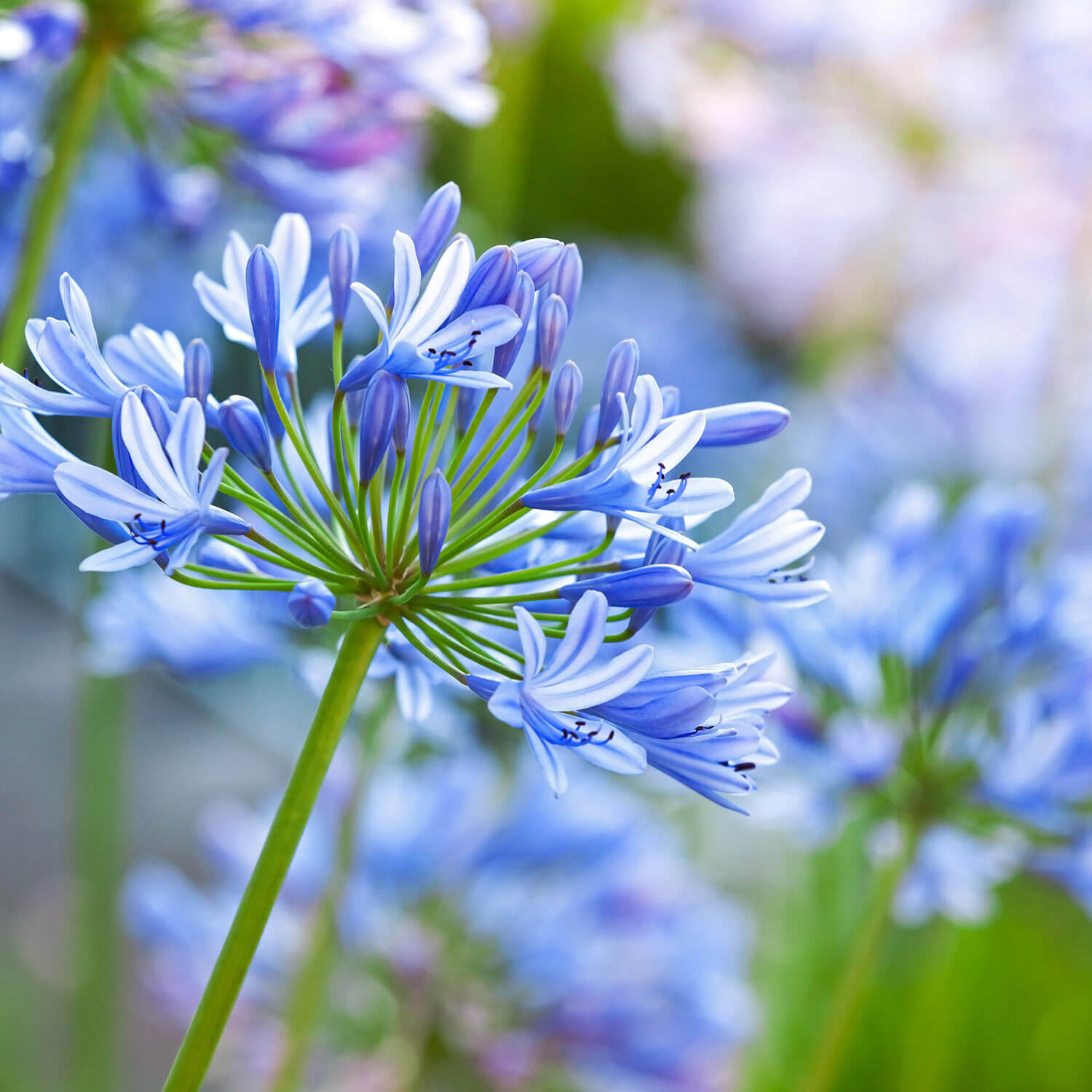Mastering the Art of Agapanthus Care: Necessary Steps for Healthy Development and Vibrant Blossoms
In the realm of cultivation, the cultivation of agapanthus stands as a gratifying endeavor for those who seek to nurture these classy blooming plants. From selecting the ideal selection to mastering pruning techniques, the trip in the direction of growing prospering agapanthus plants is complex and holds the crucial to opening the complete capacity of these herb treasures.

Selecting the Right Agapanthus Selection

When picking the appropriate Agapanthus selection for your garden, consider factors such as climate suitability, blossom shade, and growth routine. In addition, consider the environment in your region to guarantee the Agapanthus variety you select can thrive in your details problems. Comprehending the growth habit of different Agapanthus varieties is critical for correct placement within your yard.
Suitable Growing Conditions
Taking into consideration the ideal ecological requirements is vital for successful Agapanthus cultivation. Agapanthus prospers in well-draining soil with a slightly acidic to neutral pH level. When planting, pick an area that obtains complete sunlight to partial shade. In hotter climates, offering some mid-day shade can avoid scorching of the leaves. Agapanthus plants are sensitive to cool temperature levels and should be shielded from frost during winter season months.
To make certain healthy and balanced growth and dynamic blossoms, plant Agapanthus light bulbs at a depth of concerning 2-4 inches and space them 8-12 inches apart. Mulching around the base of the plants helps preserve wetness and suppresses weed development.
Watering and Fertilizing Tips
Preserving appropriate wetness degrees and giving vital nutrients are crucial aspects in the care regimen for Agapanthus plants. It is vital to strike a balance when it comes to sprinkling Agapanthus. If overwatered, these plants like continually damp dirt however are susceptible to root rot. Throughout the expanding period, water deeply as soon as a week, ensuring the dirt is well-draining to avoid waterlogging. In hotter environments or during durations of dry spell, even more frequent watering may be needed to maintain the dirt evenly damp. However, reduce watering in the wintertime to avoid waterlogged problems.
Feeding Agapanthus is vital for promoting healthy and balanced growth and respected blossoms. Apply a well balanced plant food, such as a 10-10-10 formula, in the early springtime as new development emerges. Repeat this application every 6-8 weeks throughout the expanding season. Stay clear of extreme fertilization, as it can cause lush foliage at the expense of flowers. Always adhere to the maker's instructions for correct dilution and application approaches. By complying with these watering and fertilizing pointers, you can ensure your Agapanthus plants prosper and create vivid, durable blooms.
Pruning Methods for Agapanthus
Pruning Agapanthus plants at Agapanthus the proper times and with correct strategies is critical for preserving their health and wellness and advertising optimal growth and blooming. The ideal time to prune Agapanthus is in late winter or early spring prior to brand-new growth emerges.
Deadheading spent blossoms can additionally redirect the plant's energy into generating more flowers rather than setting seeds. If you desire to accumulate seeds for proliferation, leave some flowers to mature and completely dry on the plant.
Keep in mind to use clean, sharp tools to make accurate cuts and minimize the risk of presenting diseases. Agapanthus. Normal trimming will certainly help keep your Agapanthus looking healthy and cool while making sure an abundant display of beautiful blooms
Dealing With Usual Insects and Illness
After making certain correct trimming strategies for Agapanthus, it is crucial to resolve usual parasites and illness that can affect the health and vitality of these plants. Agapanthus plants are normally sturdy however can still come down with specific concerns. One typical parasite that impacts Agapanthus is the Agapanthus gall midge. This little, orange fly lays its eggs in the foliage, resulting in altered growth and flower buds that fall short to open up. To combat this insect, prune and ruin any kind of affected plant components and take into consideration utilizing insecticidal soap.
One more usual concern is fungal fallen leave place, which offers as dark lesions on the leaves. To prevent fungal diseases, make sure great air circulation around the plants, stay clear of overhanging watering, and get rid of any kind of infected leaves quickly. Additionally, Agapanthus plants can endure from root rot if they are planted in improperly draining pipes soil. To avoid this, plant Agapanthus in well-draining soil and prevent overwatering. By being alert and taking timely action against insects and illness, you can help your Agapanthus plants flourish and create dynamic blossoms.

Conclusion
To conclude, grasping the art of agapanthus care entails selecting the appropriate range, providing perfect planting problems, appropriate watering and feeding, appropriate trimming methods, and dealing with usual parasites and illness. By following these necessary steps, you can make certain healthy development and vibrant blossoms for your agapanthus plants. Remember to routinely keep an eye on and maintain your plants to advertise their overall health and long life.
To make sure healthy growth and dynamic blooms, plant Agapanthus light bulbs at a depth of concerning 2-4 inches and area them have a peek at this site 8-12 inches this link apart. By complying with these watering and feeding pointers, you can guarantee your Agapanthus plants flourish and produce vibrant, long-lasting blooms.
One typical insect that impacts Agapanthus is the Agapanthus gall midget. Additionally, Agapanthus plants can endure from origin rot if they are grown in inadequately draining pipes dirt. By complying with these necessary steps, you can make sure healthy growth and lively blooms for your agapanthus plants.